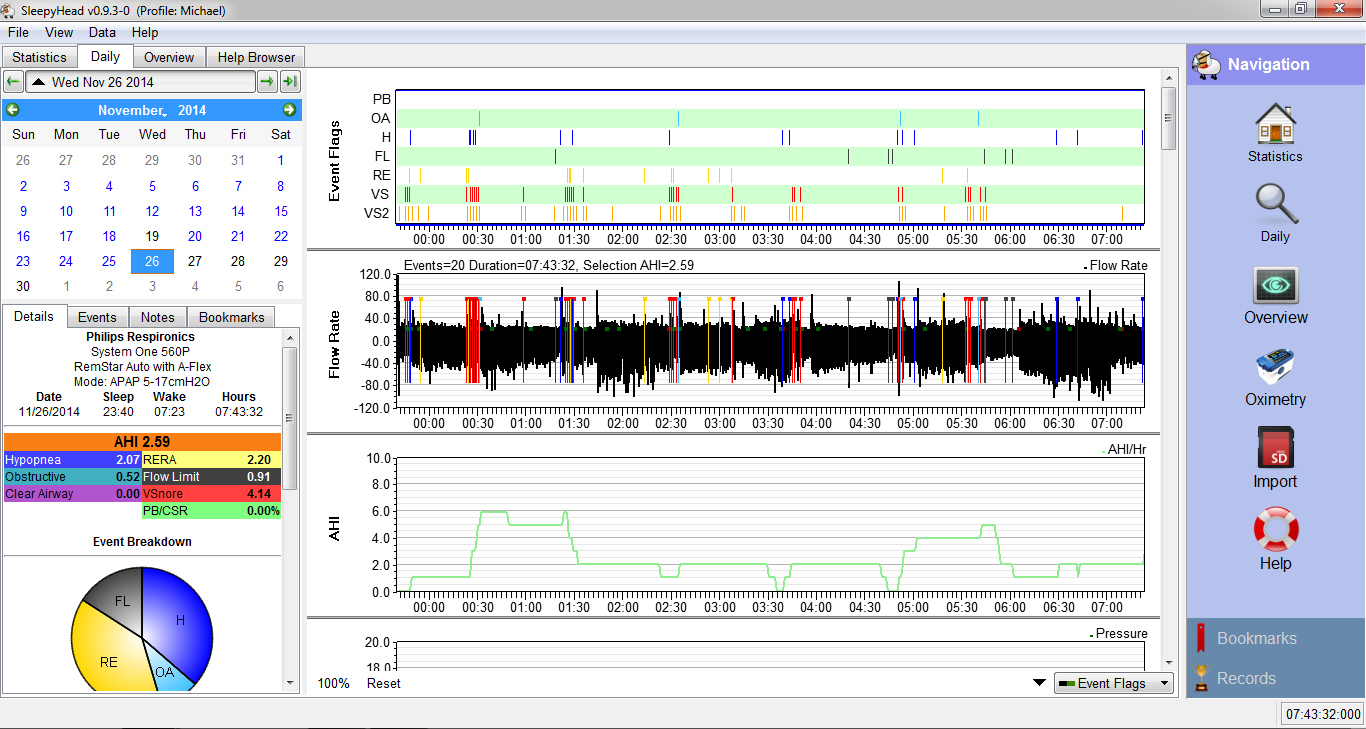Deciphering Your CPAP Data: A Guide to Offline Analysis
Continuous Positive Airway Pressure (CPAP) therapy is the gold standard treatment for obstructive sleep apnea (OSA). While modern CPAP machines often boast wireless connectivity and cloud-based data platforms, many users find themselves in situations where internet access is unavailable or unreliable. Understanding how to access and interpret your CPAP data offline is crucial for effective therapy management. This comprehensive guide will walk you through the process, empowering you to take control of your sleep health, even without an internet connection.
Understanding the Importance of Offline CPAP Data
Your CPAP machine diligently collects data throughout the night, documenting crucial metrics related to your breathing and therapy effectiveness. This data includes:

AHI (Apnea-Hypopnea Index): The number of apneas and hypopneas (partial obstructions) you experience per hour of sleep.
Analyzing this data offline allows you to:
Monitor your therapy progress independently.
Accessing CPAP Data Offline

The method for accessing offline CPAP data varies depending on your machine’s make and model. Here are the primary methods:
SD Card Analysis
Most modern CPAP machines utilize SD cards to store detailed therapy data. This is the most common and reliable method for offline analysis.
Extracting Data from the SD Card
1. Locate the SD Card Slot: Refer to your CPAP machine’s user manual to find the location of the SD card slot.
2. Remove the SD Card: Carefully remove the SD card from the slot.
3. Insert the SD Card into a Computer: Use an SD card reader to connect the card to your computer. Most laptops have built-in readers, or you can purchase an external USB reader.
4. Install Compatible Software: You’ll need specialized software to interpret the CPAP data. Popular options include:
Using OSCAR for Data Analysis

OSCAR (Open Source CPAP Analysis Reporter) is a powerful tool for analyzing CPAP data.
1. Install OSCAR: Download and install OSCAR from its official website.
2. Import Data: Launch OSCAR and import the data from your SD card.
3. Navigate the Interface: OSCAR’s interface displays various graphs and charts, including:
4. Interpret the Data: Pay attention to the AHI, leak rate, and pressure graphs.
On-Screen Data Display
Some CPAP machines display basic therapy data directly on the screen.
Accessing On-Screen Data
1. Navigate the Menu: Use the machine’s buttons to navigate the menu.
2. Find the Data Section: Look for options like “Sleep Data,” “Therapy Data,” or “My Options.”
3. View the Data: The screen will display basic metrics, such as AHI, usage hours, and leak rate.
Limitations of On-Screen Data
Limited data: On-screen displays typically show only summary data.
Understanding Key CPAP Data Metrics
To effectively analyze your CPAP data, you need to understand the meaning of key metrics.
Apnea-Hypopnea Index (AHI)
AHI measures the number of apneas and hypopneas per hour of sleep.
Leak Rate
Leak rate measures the amount of air escaping from your mask.
Pressure
Pressure is the air pressure delivered by the CPAP machine.
Usage Hours
Usage hours measure the duration of your CPAP use.
Central Apneas (CA)
Central Apneas are breathing pauses not caused by airway obstruction.
Flow Limitation (FL)
Flow limitation shows if there is resistence to the airflow.
Troubleshooting Common CPAP Data Issues
Analyzing your CPAP data can help you identify and troubleshoot common issues.
High AHI
Check your mask fit for leaks.
High Leak Rate
Ensure a proper mask fit.
Low Usage Hours
Make CPAP therapy a part of your nightly routine.
Sharing Offline Data with Your Doctor
Even without internet access, you can share your CPAP data with your doctor.
Printing OSCAR Reports
OSCAR allows you to generate detailed reports.
Saving Data to a USB Drive
Save your OSCAR data to a USB drive.
Taking Pictures of On-Screen Data
If your machine only displays data on screen, take pictures of the data screens.
Maintaining Your CPAP Machine for Accurate Data
Proper maintenance is essential for accurate CPAP data.
Regular Cleaning
Clean your mask, tubing, and humidifier regularly.
Replacing Filters
Replace your CPAP filters as recommended.
Checking for Leaks
Regularly check your tubing and connections for leaks.
Conclusion
Analyzing your CPAP data offline empowers you to take control of your sleep health, regardless of internet availability. By understanding key metrics, utilizing available software, and maintaining your machine, you can effectively monitor your therapy progress and ensure optimal results. Remember to consult your doctor for personalized advice and adjustments. Consistent CPAP use and data monitoring are crucial for improving your sleep quality and overall well-being.


